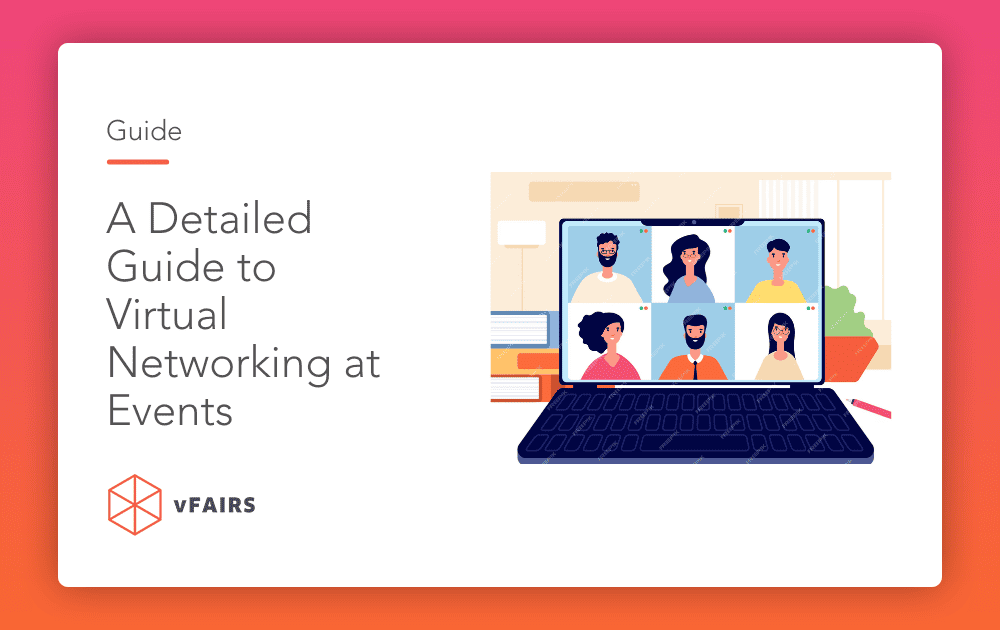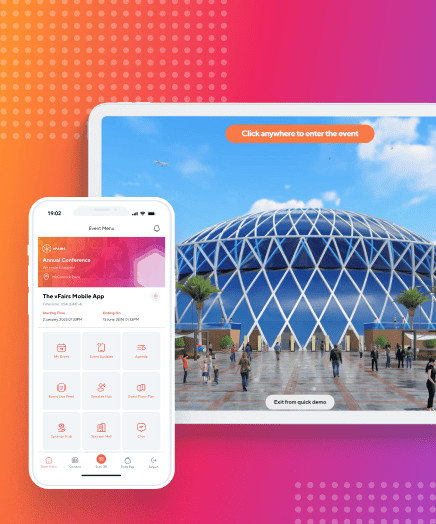Do you want to network with experts worldwide without leaving your house? In this guide, we will show you how virtual networking is the ultimate solution for this conundrum. It is a common and productive way to expand your professional network nowadays, regardless of your location or the time zone in which you are located. Whether you want to grow your business or meet people in your field, virtual events are a great way to network and make connections.
Chapter 1: What is Virtual Networking?
As social creatures, humans rely on socialization and networking to thrive in their personal and professional lives. Online networking events bring people together regardless of their geographical location and time zone. You can build a borderless network and get exposed to new opportunities. You can gain insights from experts and learn new approaches to tackle blockers in your day-to-day lives. The possibilities are endless; let’s take a deep dive into virtual event ideas to maximize the benefits of networking in the digital age.
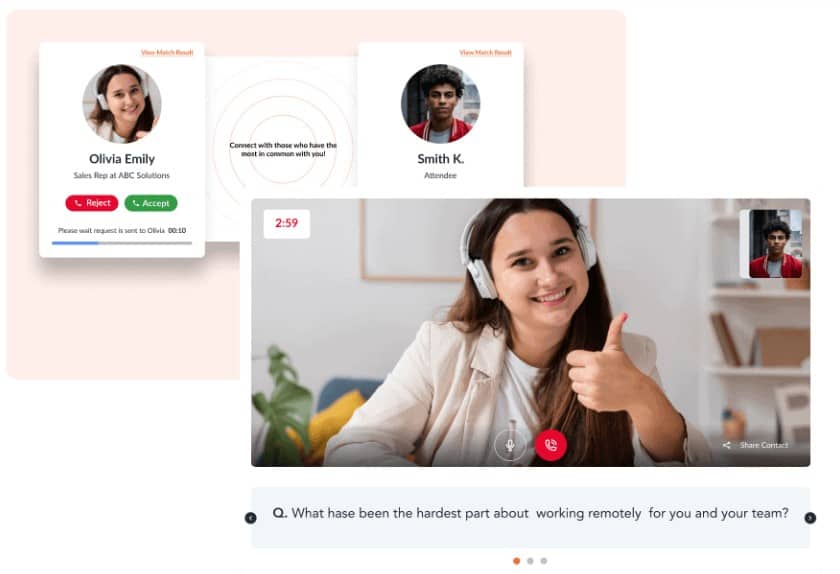
What Types of Events Use Virtual Networking?
Virtual networking event ideas include the following:
- Business Conferences
Professionals from various industries are typically drawn to these gatherings as attendees, speakers or sponsors to accomplish their respective business goals. They use online networking opportunities to meet peers, build employer brands and share knowledge.
- Trade Shows and Expos
Exhibitors and attendees can connect through networking at trade shows, allowing them to plan virtual meetings, product demos, and other activities.
- Job Fairs
Virtual job fairs allow job seekers to network with recruiters and companies worldwide, simplifying job interviews and career opportunities.
- Professional Development Workshops and Seminars
Participants can meet one another and leaders in their field virtually to share insights, learn, and build professional relationships.
- Networking Events
You can organize networking events specifically to connect professionals; these events can be industry or location specific. Companies, associations, and other organizations can host these events to help their members meet and foster connections.
- Virtual Happy Hours and Meetups
Groups, communities, and organizations conduct social events like meetups, virtual happy hours, and other networking opportunities to engage with their members.
In short, you can apply virtual networking to any event to bring people together, wherever they may be, and give them chances to share ideas and form new relationships.
In-person Events
Virtual networks at in-person events can complement traditional networking possibilities when people are physically present in the same location. Before, during, and after the event, attendees can communicate with each other using mobile apps or internet platforms. Other virtual networking ideas include “breakout rooms” where attendees can engage in group conversations or one-on-one meetings with other attendees.

Virtual Events
Virtual events are entirely online, typically via video conferencing or virtual event platforms. Virtual networking is integral to these events as attendees are in different physical locations. They often include networking sessions where attendees can connect in various ways, such as through group video chats, instant messaging, AI matchmaking, or even virtual business card exchange.
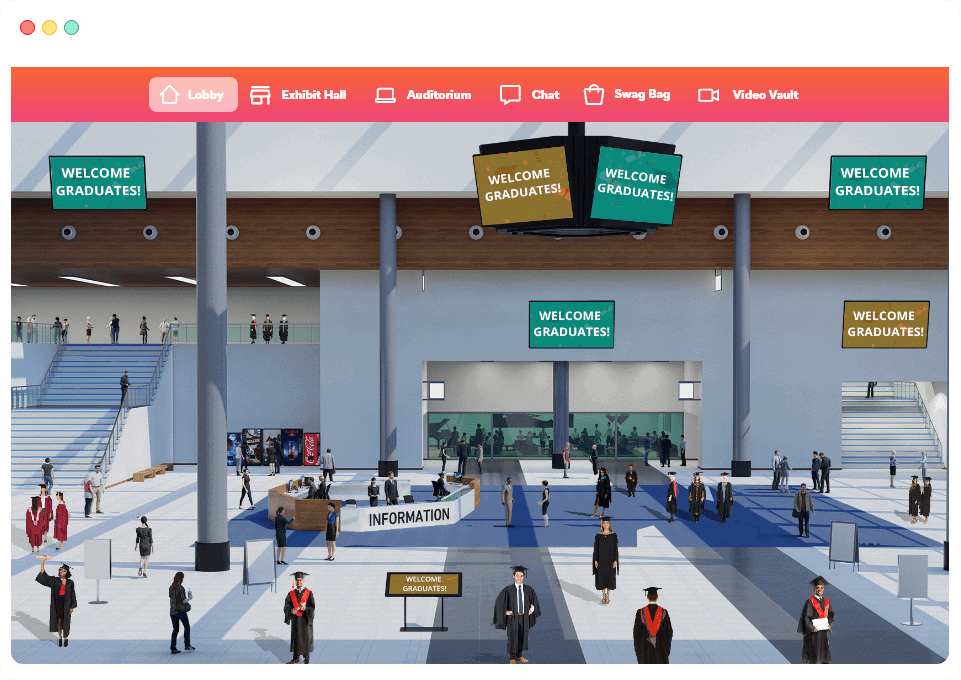
Hybrid Events
Virtual networking can play an essential part in hybrid events by allowing attendees to engage regardless of location. For instance, participants attending the event remotely can still participate in networking events with attendees who are present in person. They can also connect with webinar speakers or join panel discussions virtually. This makes it possible for a more inclusive and diverse audience and for participants who might not be able to attend in person to have more flexibility.

Importance of Virtual Networking at Events
As technology advances, it is becoming increasingly important for people to connect with one another virtually while attending events. Let’s have a look at how it can be beneficial.
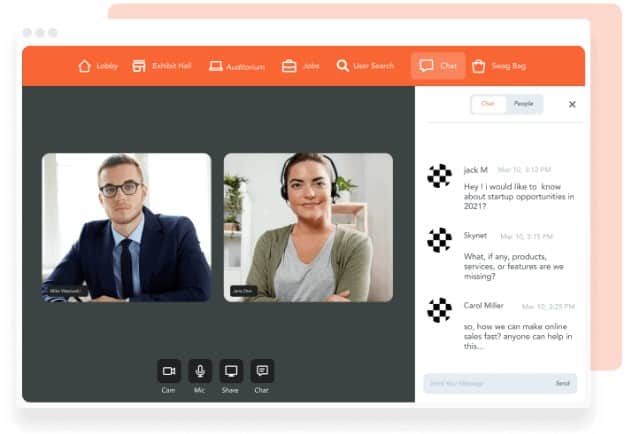
Social Interaction
Even when not physically present, attendees can connect and develop relationships during virtual events. This can be particularly helpful for participants who cannot travel to physical events or for events that draw a large and diverse audience.
Showcase Your Brand
Companies and groups may exhibit their brands to a larger audience by hosting virtual events. Moreover, companies can increase visibility and contact more potential customers by participating in networking events online.
Connect With Prospects
Attendees can connect with prospects through virtual events, whether they are prospective partners, clients, or customers. In addition, they can develop new relationships and connections through engaging activities like roundtables or 1:1 chats that could result in new business prospects.
Increase Business
Participating in virtual events allows businesses and organizations to broaden their consumer base and increase revenue by exposing their brand to a larger audience and developing relationships with future clients.
More Professional Opportunities
Professionals can develop their skills and network with like-minded individuals by attending seminars, workshops, and other virtual events. This can also help professionals expand their horizons, learn something new, and make valuable connections.
How Does Virtual Event Networking Work?
When you attend a virtual event, you’ll likely have the opportunity to connect with other attendees through networking. You’ll have access to technology such as video conferencing tools, mobile apps, or virtual platforms that make it possible to connect with other attendees before, during, and after the event. Here’s how virtual networking works:
1:1 Networking
Picture this: you’re at a virtual event and have a video chat with someone you just met. It’s the same as if you were in the room together, but it’s happening virtually. In this meeting, you can share information about your company, learn about theirs, and arrange a follow-up meeting if necessary. Virtual events require preparation and follow-up in the same way that in-person events do.

Group Discussions
Sharing your interests, discussing the latest industry trends, and learning from experts are part of participating in a group discussion with other attendees. You can join the discussion by clicking on a link or entering a special code, leading you to a virtual room where you can communicate in real-time with other attendees. It’s a fantastic way to learn, share ideas, and make new friends.
- Breakout Rooms
Breakout rooms are more intimate, smaller discussion groups focusing on specific topics or themes. These rooms are frequently moderated, allowing attendees to engage in more in-depth, concentrated discussions. In addition, it can be an excellent chance to meet other participants who share your interests.
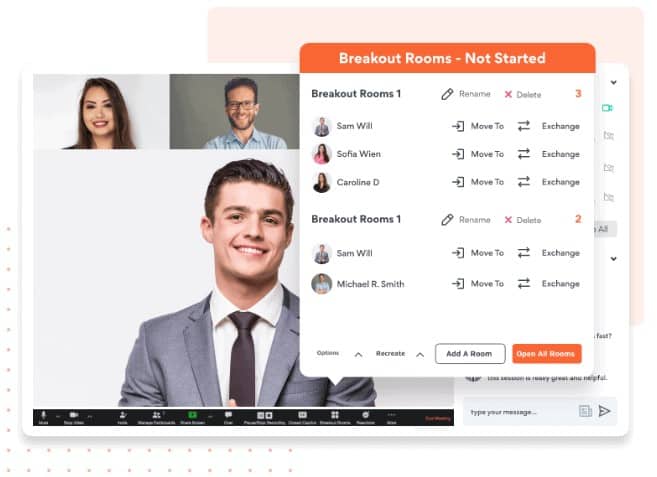
- Roundtables
Roundtables are similar to breakout rooms but often focus on a specific topic or theme and have a moderator, an expert in the field, who leads the discussion. They provide an opportunity to learn from industry experts and gain insights you can apply to your business.
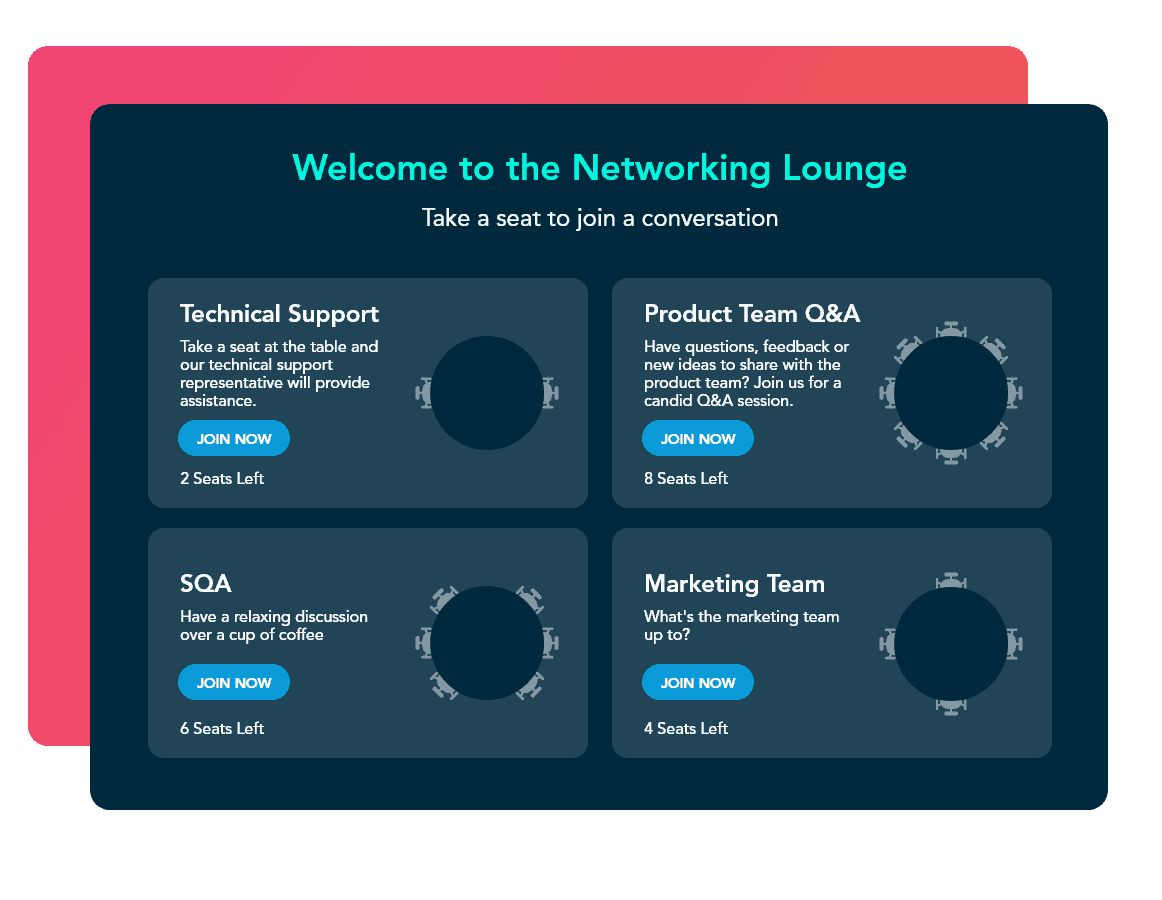
Chapter 2: Networking at Virtual Events
Why Should People Network at Events
According to a LinkedIn survey, 50% of individuals expect to meet new people at online networking events.
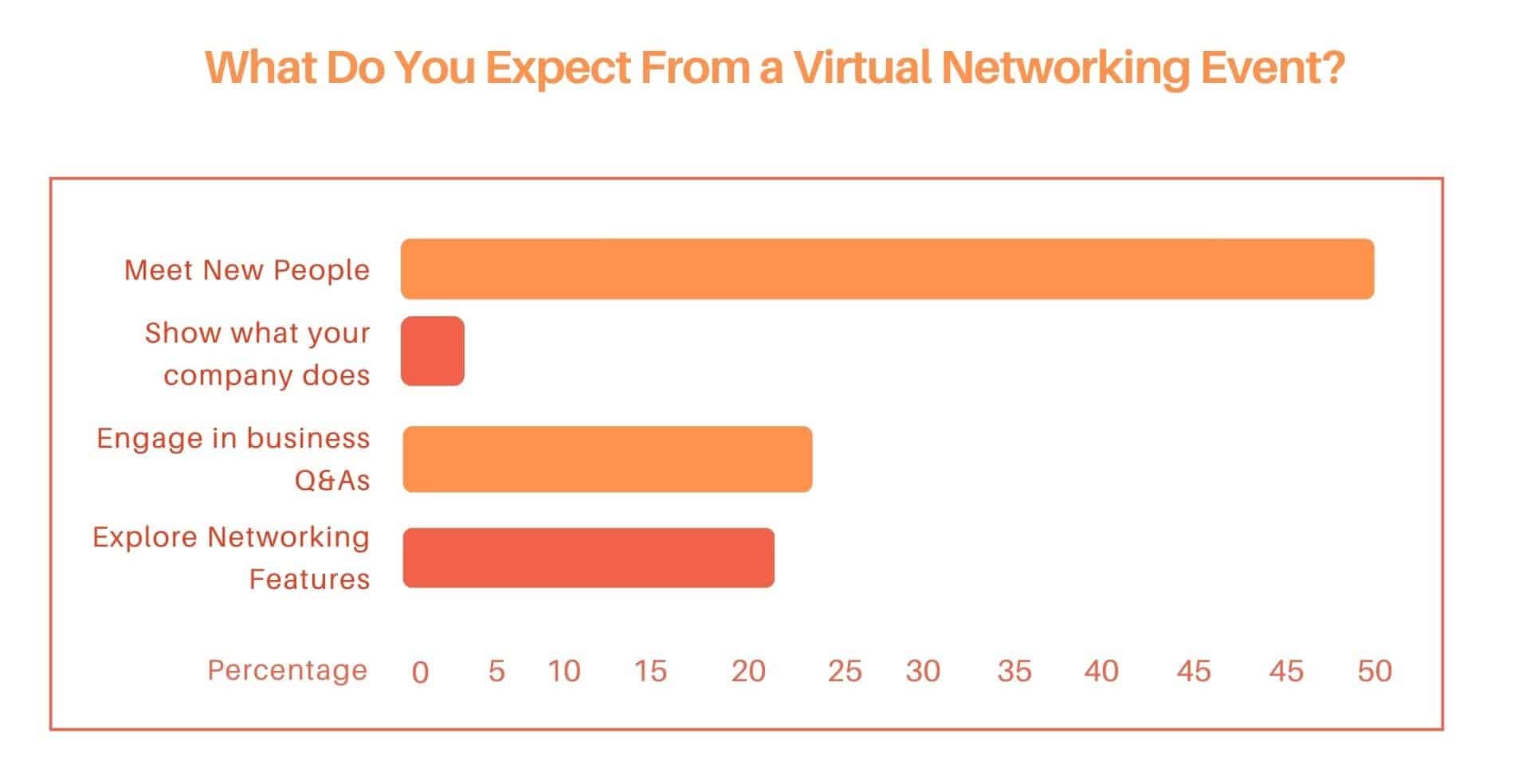
Attending networking events allows one to meet new people and make connections that can lead to future professional success. It provides opportunities to meet and learn from professionals in one’s field and to get innovative ideas and viewpoints. Event networking is not only a great way to meet people but also a fantastic opportunity to learn about cutting-edge advancements in your field, discover useful resources, and expand your professional horizons.
How to Network Virtually
Networking at events may be a vital tool for professional development, but planning ahead is critical to make the most of the opportunity. To develop a strategy for networking at events, here’s what you should consider:

Understanding Objectives
Before you go to the event, think about what you want to accomplish through networking. Do you want to broaden your professional network, learn from industry experts, or see new perspectives? Knowing your goals will help you stay focused and gain from the experience.
Figuring Out How to Present Yourself
Take some time to consider how you want others to perceive you. This includes knowing your talents, shortcomings, and what you hope to achieve through networking. You’ll be able to adjust your approach and make the most of your networking opportunities if you understand how to promote yourself.
Having Post-event Activities Lined Up
It is likely that people you meet do not remember you post-event as they must have met numerous other attendees. In order to stay on their radar and nurture your relationship with them, you need to plan the next steps. Sending an email, booking a meeting, or adding people to your professional network are all examples of this.
12 Ways to Boost Networking at Virtual Events
Networking ideas for virtual events can be difficult, you can still create meaningful relationships with the correct strategy. For example, assume you’re attending a virtual event and want to take advantage of the virtual networking activities, but you’re unsure where to begin. Don’t worry; we’ve got your back. Here are twelve pointers to help you network more effectively at virtual events:
1. Engage in Pre-Event Activities
Reach out to individuals you wish to connect with before the event and introduce yourself. You can also utilize the event’s platform to see who else is going and create a list of people you want to connect with.
2. Share Your Bio With the Organizers
Some virtual events allow attendees to share their bios with the organizers; this can be a fantastic way to meet other attendees with similar interests. Make an effort to develop a brief and clear bio that highlights your professional background and areas of interest.
3. Use Social Media
Utilize social media to connect with other attendees before and during the event; you can use the event’s social media hashtags to connect with others. Try to be active on social media by sharing event information and images, and engaging with other participants.

4. Participate in Discussions
Many online networking events include a networking lounge or breakout rooms; take advantage of these areas by participating in discussions and meeting new people. Try to be active and engaged during talks by asking questions and sharing your opinions.
5. Engage in Live Chat
Many virtual events have a live chat option, which you can use to connect with other attendees and initiate conversations. Again, try to be friendly and professional, and approach people with whom you wish to interact.
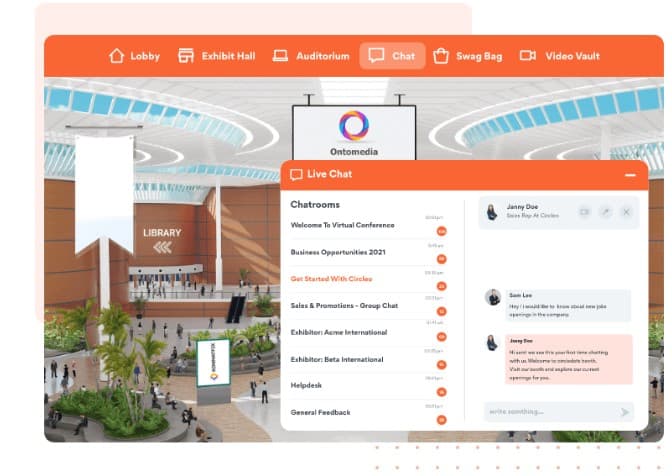
6. Use a Mobile Event App
A mobile event app facilitates virtual networking by connecting attendees regardless of their location. The app may have live chat rooms, discussion forums, or a social wall where participants can interact. Mobile apps also offer virtual meetings, 1:1 video conversations, and other networking opportunities.
vFairs mobile event app is a comprehensive solution that helps organizers and attendees streamline the entire event experience. Attendees can network virtually, making it an ideal solution for events of all sizes and formats. The app facilitates community building by allowing attendees to connect through its live feed and social wall. vFairs mobile event app also helps increase attendee engagement by offering interactive tools such as polls and surveys.
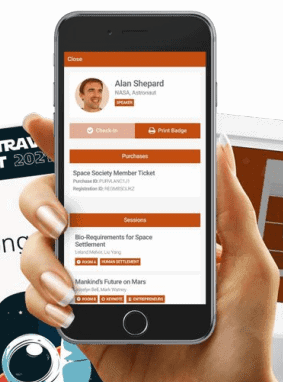
7. Create Fun Games
Organize or take part in enjoyable games that encourage participants to interact with one another; this can be a fantastic way to break the ice and meet new people.

8. Conduct Q&A Sessions
Q&A sessions can significantly improve networking at virtual events. These sessions give attendees the chance to ask questions, get clarification on their concerns, and receive answers, which boosts their participation in the event. Attendees can also interact with the presenters and other attendees, share ideas, and form new connections during the session. Additionally, Q&A sessions can foster peer-to-peer learning and provide attendees with a sense of community, enhancing their involvement and connection with the event.
9. Use a Meeting Scheduler
Many virtual events have a built-in meeting scheduler that allows you to schedule meetings with other attendees. Make sure to use this tool to schedule meetings with people you want to connect with.
10. Collect Contacts
Make a list of people you want to connect with and collect their contact information using the virtual business card exchange tool. Then, follow up with them after the event, and don’t hesitate to organize a meeting or phone conversation with them in the future.
11. Use AI Matchmaking
As the virtual world continues to dominate how we interact and network, it is crucial to understand the virtual networking preferences of participants. 52% of people wish to have preference-based matchmaking at events, according to a LinkedIn survey.
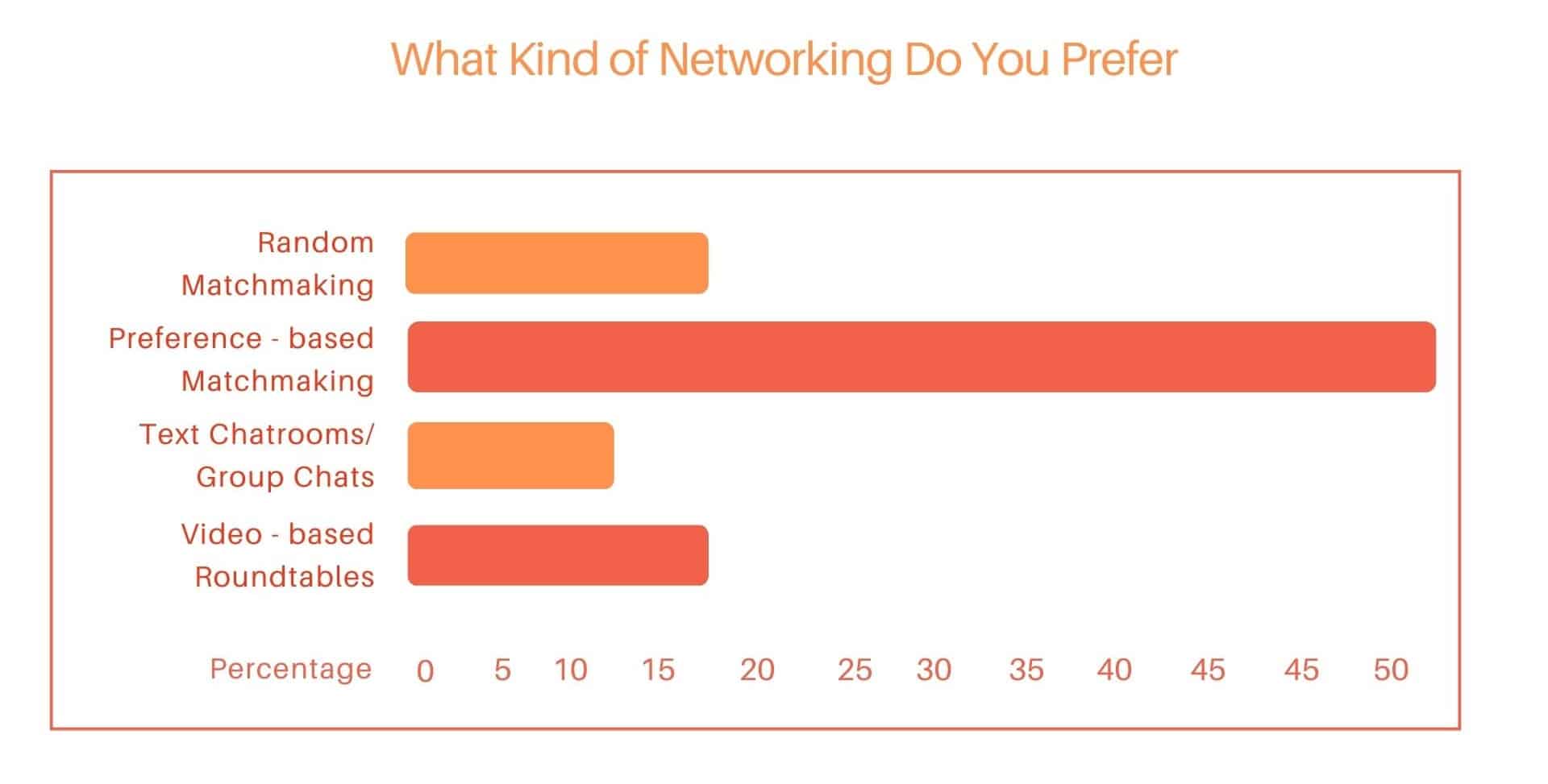
AI matchmaking is a feature that connects participants with other attendees with similar interests or goals using artificial intelligence algorithms. It works by assessing attendees’ profiles, hobbies, and ambitions and then matching them with other attendees who are a good fit. This can be a fantastic way to meet new people and uncover new business prospects. Attendees are also more inclined to participate in networking events online where AI matchmaking is available because they know they can easily connect with others who share their interests.
Spatial Connect is a novel approach to virtual networking offered by vFairs. The feature incorporates metaverse and virtual reality elements, making it feel more like an in-person event networking experience. It enables guests to roam around a virtual location, interact with other attendees, and engage in conversations like they would at an in-person event. This feature is especially beneficial for large virtual events when connecting with other attendees can be difficult.
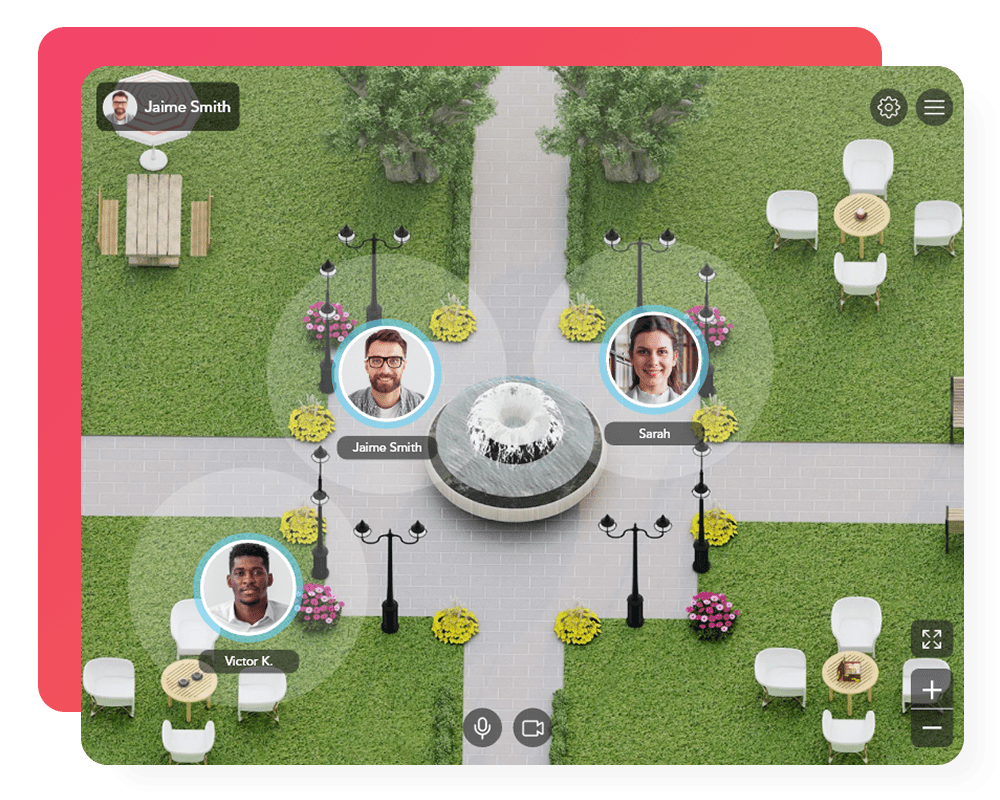
12. Follow Up Promptly
Follow-up after a virtual meeting is important if you want to keep the connections you made and build long-lasting relationships. A quick and easy way to keep the conversation going is to send an email to the person you met with, thanking them for their time and letting them know you’d like to keep in touch. You can also send them a LinkedIn connection request with a personalized note and engage with them on the platform.
Chapter 3: Pros and Cons of Virtual Networking at Events
Virtual event networking has become increasingly popular recently as technology has advanced to make networking more sophisticated and effective. While there are pros and cons to networking virtually, it is becoming an increasingly viable option for many people and organizations. Let’s discuss the pros and cons of networking at virtual events, helping you to weigh up the benefits and drawbacks and determine whether it is the right approach for you
Benefits of Virtual Networking
- Cost-Effective and Convenient
Since networking at virtual events is frequently less expensive than in-person networking events; it is more accessible to a broader range of people and organizations. It also eliminates the need for travel and accommodation, allowing you to communicate with others from the convenience of your home or workplace.
- Greater Access to Information
Virtual event networking frequently enables quick access to information and resources, such as virtual business cards and social media profiles, making it easier to learn more about the individuals you connect with and follow up with them later.
- Global Reach
You can connect with people worldwide through virtual networking, significantly expanding your potential network and opportunities. It also allows you to connect with others on your own time, making networking easier to integrate into your hectic schedule.
- Easy Post-Event Analysis
Virtual events make post-event analysis easier by collecting data and analytics such as attendance, engagement, and conversions. This can assist event organizers in understanding the effectiveness of their activities and improving future events.
Cons of Virtual Networking
- Low Attendance
Many people may need to recognize the usefulness of virtual events or may be unable to participate due to technological issues. This can make it difficult for organizers to reach their target attendance numbers and for attendees to interact with a diverse group of people.
- Lack of Attendee Engagement
Networking events online frequently lack the face-to-face contacts that distinguish them from in-person networking events. This can make it more difficult to form relationships and connect with others. For example, virtual attendees are usually not comfortable switching on their cameras during video conferencing calls which makes it difficult to build stronger connections.
- Technical Issues
Technical issues, such as connectivity problems or audio/video quality issues, can occur at virtual events. These flaws might be annoying and make it difficult for participants to participate in the event fully.
- No Face-to-Face Interactions
Networking at a virtual event is less personable than meeting someone in person, therefore, creating trust and establishing connections with people can be more difficult.
However, virtual technology is growing more sophisticated daily, and many individuals depend more on technology to network, even at in-person events. With the correct attitude and tools, virtual event networking can be an effective and valuable method to interact with others and create professional ties.
Chapter 4: How to Host a Virtual Networking Event
Imagine you are an event organizer planning a virtual event focusing on networking. You want to ensure your attendees have a great experience and leave with valuable connections. Here are some things to remember to boost virtual engagement at your event.
Before the Event
Invite an Appropriate Amount of People
Keep in mind the number of people you invite. A lower number of attendees will make networking and contact sharing easier. It is preferable to have fewer individuals but deeper connections. It is critical to target the appropriate audience who will benefit the most from the event.
Simplify Logistics
Give attendees clear directions and technological assistance to make it easy for them to participate in the event. Preparing a guide with step-by-step instructions and a FAQ section might help you cover all potential questions. This ensures that your attendees get all vital information and have no difficulty joining the event.
Send Out Reminder Emails with Guest Introductions
Send out reminder emails containing speaker introductions, bios, and contact information to assist guests in preparing for the event. This will enable them to arrive prepared and make the most of the occasion. With this information, participants can begin researching and making a list of persons they wish to connect with.
Choose the Right Virtual Event Platform
To make the event more engaging, use a virtual event platform that includes networking lounges, matchmaking, and video conferencing services. The correct platform will assist you in creating an interesting and dynamic atmosphere that encourages participants to network and connect.
During the Event
Conduct Icebreakers
Incorporate engaging icebreaker activities to make attendees feel more at ease around unfamiliar attendees. Icebreakers encourage attendees to initiate or engage in conversations and begin making connections right away.
Be an Active Moderator
Make sure to encourage attendees to connect with each other through group discussions, virtual breakout rooms, or one-on-one conversations. Stay aware and respond quickly to any technical issues to guarantee a seamless and pleasurable experience for all participants.
Offer Multiple Means of Connecting
You can offer multiple means of connecting, such as video conferencing, live chat, and virtual business cards. A variety of networking features are available for attendees to choose from per their preferences. They can connect through chat, audio, or video sessions. They can interact 1:1 or in group discussions or breakout sessions.
You can also offer AI matchmaking to help attendees find link-minded individuals easily. Spatial Connect feature also uses spatial audio and VR technology to create an immersive and interactive networking experience. These features offer unique networking opportunities that cater to different peoples’ communication preferences.
After the Event
Send Follow-up Emails
Send follow-up emails to attendees to thank them for attending, to give resources or material mentioned during the event, and to solicit feedback. This follow-up check will show that you appreciate their presence. It will also provide an opportunity to receive feedback from attendees that can help you improve future events.
Promote a Future Event
Utilize the collected feedback and data to plan and market a future event to your attendees. Share any new developments or changes since the last event, and inform them of the upcoming event date. This will inspire them to continue attending your networking events and forge stronger relationships.
It is critical to remember that networking is an ongoing process and that relationship building does not end with the event. Attendees who have a good networking experience are likely interested in upcoming events. You can keep sending them updates via email. By staying in touch, you can nurture your relationship with the attendees and improve your chances of turning them into returning visitors.
Chapter 5: How to Make Virtual Networking Events Interesting
Virtual events have grown in popularity for professionals to meet and extend their network. Still, people find virtual gatherings to be less engaging than in-person gatherings. However, with the correct approach and technologies, virtual networks can be as exciting and effective as in-person gatherings.
Ideas for Virtual Networking at Events
Icebreakers
Icebreaker questions are a great approach to put attendees at ease and spark conversations. These questions are usually open-ended and simple making it easier for participants to respond. You can also organize icebreaker activities that are interactive and enjoyable for the guests to partake in. Here are some examples of icebreaker questions you can include in your next event:
- What motivated you to participate in this virtual networking event?
- What is your current job/industry, and how do you hope to benefit from this event?
- What is a fascinating project you have lately worked on?
- Who would you choose to have dinner with, living or dead, and why?
- What is your favorite pastime aside from work?
- Can you tell me something interesting about yourself?
Remember that these questions should be open-ended and common so that participants can respond quickly without any difficulty. You can create your icebreaker questions based on your event theme and audience.
Invite a Guest Speaker
Inviting a guest speaker to your event can make it more fascinating and engaging. A guest speaker can bring significant views and information while sparking conversation among attendees. This can be a great way to help participants learn something new, pose questions and engage in interactive discussions.
Create an Event Theme
A theme can make your event more engaging and motivate attendees to participate. The topic can be specific to the guests’ industry or profession or be more inclusive and enjoyable. For example, create a theme based on a popular TV show or movie, and encourage guests to dress up or decorate their virtual backdrops accordingly.
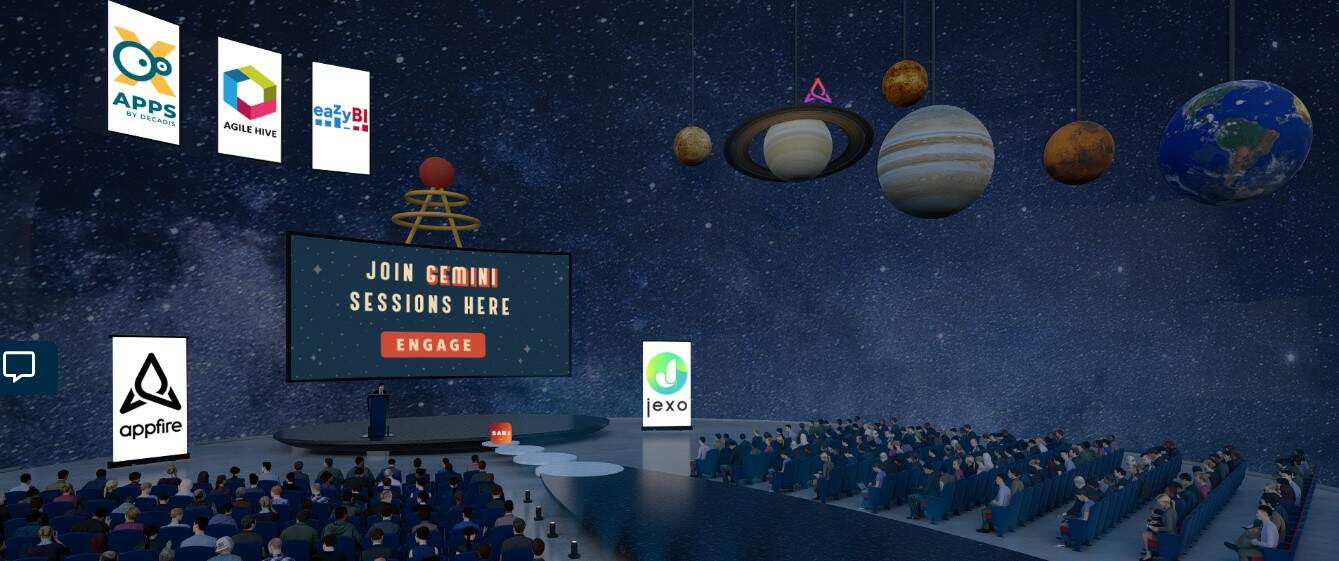
Use Breakout Rooms
Using breakout rooms for small group conversations can give guests a dynamic and interesting experience. Breakout rooms enable guests to have more intimate and concentrated interactions with a smaller group of individuals, which can be good for networking. Furthermore, employing breakout rooms helps guests meet new individuals and broaden their network in a more personalized manner.
Add Games/Polls
Including games or polls in-between sessions can help guests recharge by doing something fun instead of waiting. If the games require group participation, they can establish a sense of community. They can also encourage attendees to connect and engage with one another. You could, for example, host a virtual scavenger hunt, a quiz game, or a poll on a current topic.
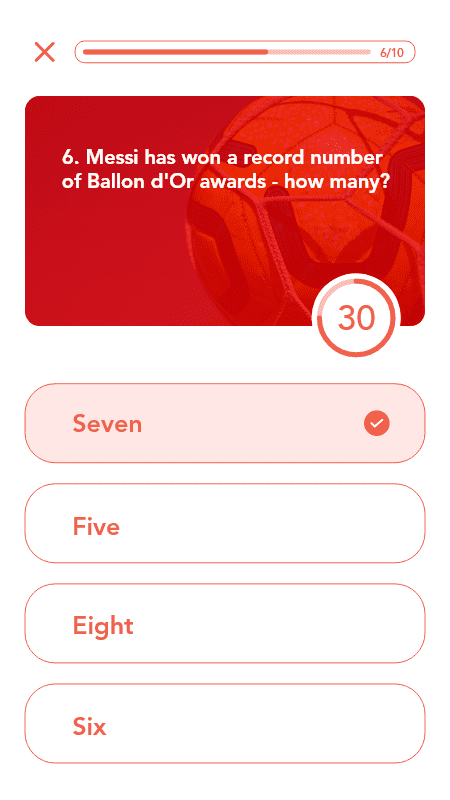
Here are some top virtual event ideas you can modify to cater to different audiences and industries.
What is the Future of Virtual Networking?
Networking at virtual events is anticipated to grow in popularity as technology improves and becomes more accessible. We can already see the increased demand for hybrid events that integrate virtual and in-person events with various networking opportunities. Networking is a massive attraction for people to attend any event. vFairs is one such platform that offers excellent networking opportunities, whether it’s a virtual, hybrid, or in-person event. Use its variety of networking features to meet your event’s objectives in a way that’s both enjoyable and productive for you and your attendees.
How To Find Virtual Networking Events
Finding the right networking opportunities might take a lot of work with the growing popularity of virtual events. Here are a few great resources to help you identify virtual events that can help you build connections and expand your network from the comfort of your home:
Newsletters
Newsletters are a common way for event planners and industry experts to educate their followers about future online conferences. Attendees and exhibitors can sign up to stay up-to-date and find relevant events to attend.
College Alumni Centers
Schools and universities host virtual alumni networking events throughout the year. These gatherings are a fantastic way to reconnect with old classmates and establish new ones. You can learn about these events by visiting your school’s website or alumni center.
Religious Organizations or Groups
You can also attend virtual events hosted by many religious groups and organizations. For additional information, it’s best to visit their website or social media profiles.
Slack Groups
There are numerous slack groups devoted to various businesses and professions. Joining these communities might help you interact with individuals in your industry and learn about upcoming virtual events.
Professional and Industrial Groups
Many professional and business groups provide online networking events and webinars. These events are a wonderful way to network with individuals in your sector and stay updated on the newest advancements. You can find these events by browsing the groups’ websites or social media pages that interest you.
Coworking Spaces
It is common for coworking spaces to host online seminars and conferences. Inviting yourself to these communities might help you meet other professionals in your field and find out about online events you would want to attend.
Virtual Event Platforms such as vFairs Discover
vFairs Discover provides a consolidated listing of all types of events, from conferences to job and career fairs. While there is an endless variety, it is extremely simple for individuals to search for events of interest to them. Event organizers can also give their events a boost and reach a wider audience by marketing their events on the listing.
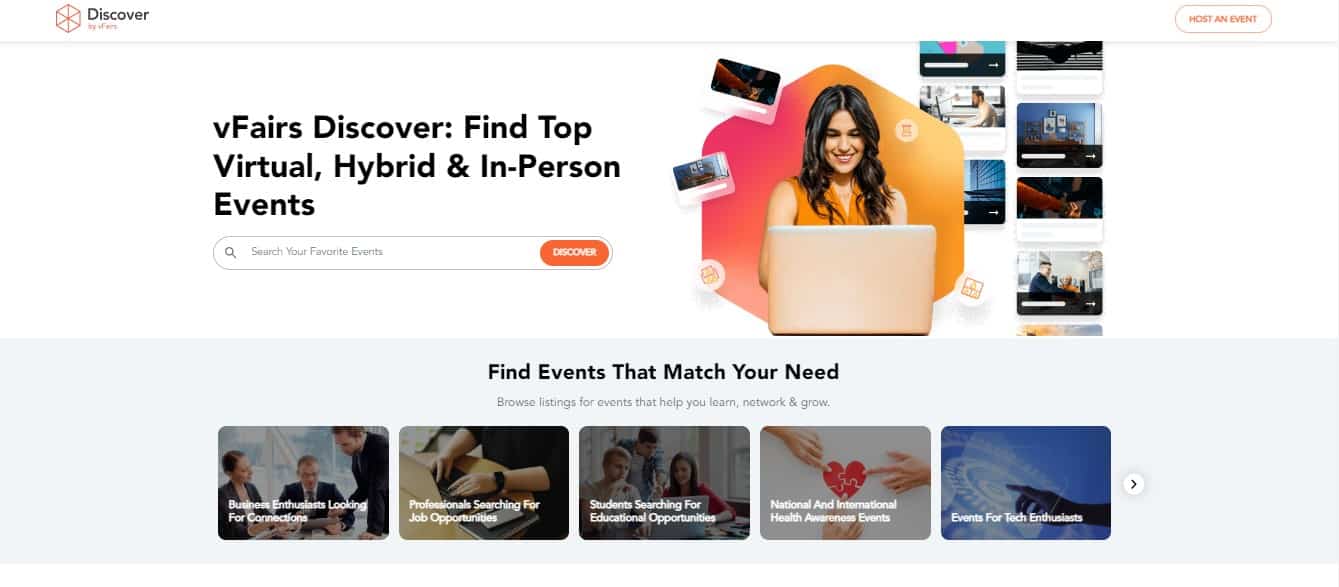
Key Takeaway
Virtual networking helps people network and create professional ties more easily. It is not limited to virtual events but also in-person and hybrid events, thanks to the usage of virtual platforms like vFairs. You can meet like-minded individuals through smart matchmaking or have specific discussions at roundtables. You also have the option to conduct 1:1 or group audio, or video conversations. Although some may argue the lack of personalization, if you plan ahead and have a strategy in place, you can make the most of networking opportunities through this medium. Explore more and get started.
Happy networking!
FAQs
How do I make virtual networking exciting?
To make virtual networking exciting, consider incorporating interactive elements and unique themes that set your event apart. Virtual networking ideas include engaging activities such as virtual icebreakers, interactive polls, and breakout sessions. You can also encourage participants to share their experiences and insights through multimedia formats like short videos or dynamic presentations.
What is an example of an online networking event?
An example of an online networking event could be a virtual industry conference where professionals from a specific field gather online to attend keynote presentations, join breakout sessions, participate in panel discussions, and engage in virtual networking opportunities. Specialized virtual event platforms such as vFairs can facilitate such events seamlessly.
How do you structure a virtual networking event?
To structure a virtual networking event effectively, begin with a clear agenda outlining key sessions, speakers, and interactive activities. Incorporate breaks to prevent participant fatigue and encourage informal networking. Leverage technology to create virtual spaces for different purposes, such as themed breakout rooms, discussion forums, and one-on-one meeting areas. Lastly, ensure that participants have easy access to event materials and relevant information.
How do you make an online networking event fun?
To make online networking events fun, infuse elements of entertainment and creativity. Consider incorporating a theme or dress code to add a playful touch. Host virtual games or contests with prizes to encourage participation. Integrate live performances, such as virtual musicians or comedians, to break up the networking sessions
How can I improve my virtual engagement?
To improve virtual engagement, focus on fostering interaction and participation. Encourage active involvement through interactive polls, Q&A sessions, and virtual hand raising. Utilize breakout rooms for smaller group discussions and networking opportunities. Leverage multimedia content such as videos, slideshows, and live demonstrations to maintain interest. Provide opportunities for attendees to contribute their thoughts through chat features or virtual discussions.
What are some virtual networking ideas for large groups
For large virtual networking, try speed networking event ideas, themed roundtable discussions, and interactive workshops led by experts. Create industry-specific breakout rooms, simulate a virtual expo, and host panel discussions with Q&A sessions. Incorporate gamified elements like trivia or scavenger hunts for a fun twist, and use interactive polls and virtual coffee breaks to enhance engagement. These varied formats cater to diverse interests, fostering meaningful connections in the virtual landscape.

![Your Comprehensive Guide to Virtual Networking Ideas [2024]](https://www.vfairs.com/wp-content/uploads/2023/01/Hira-Yousaf.jpeg)
